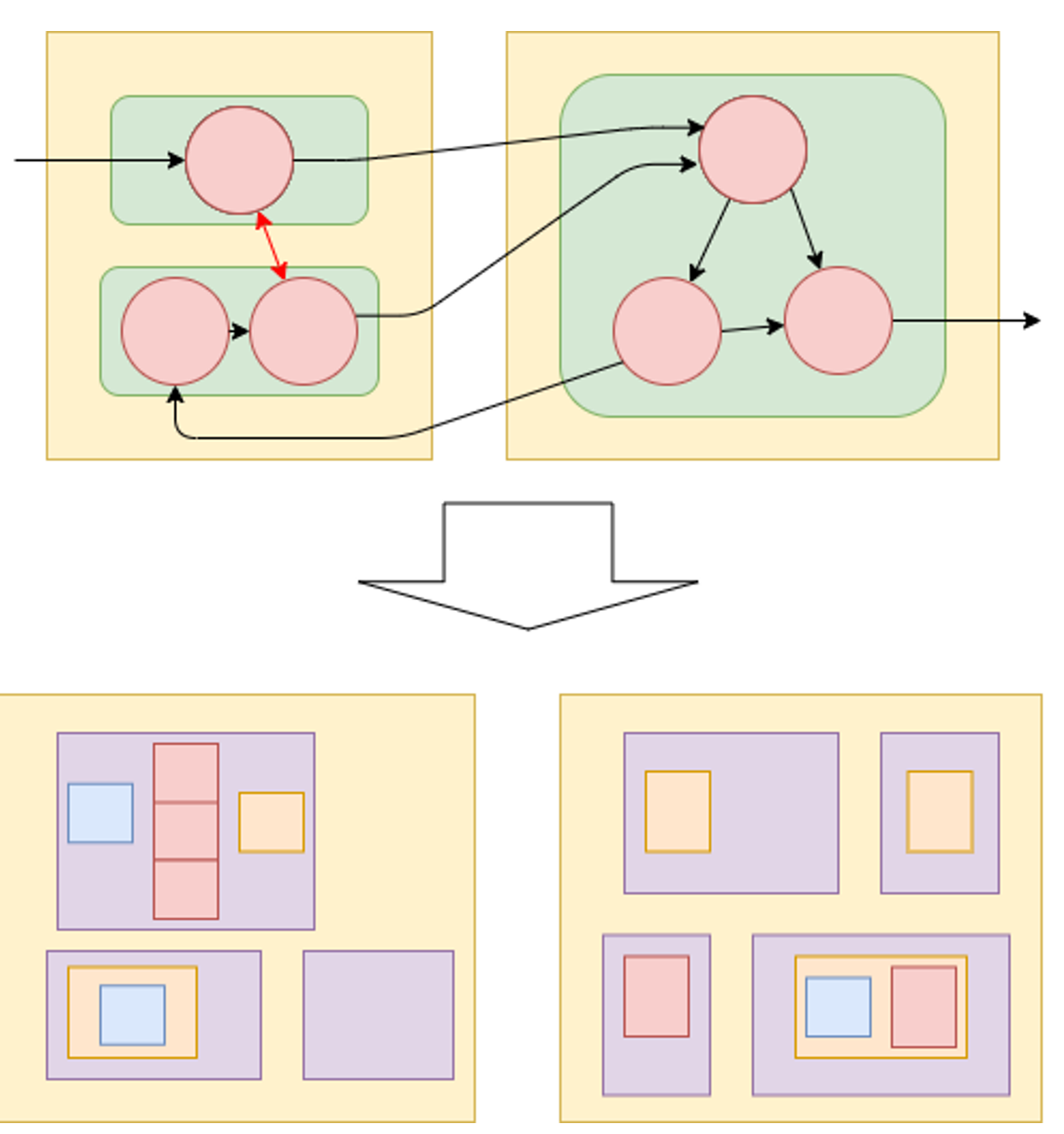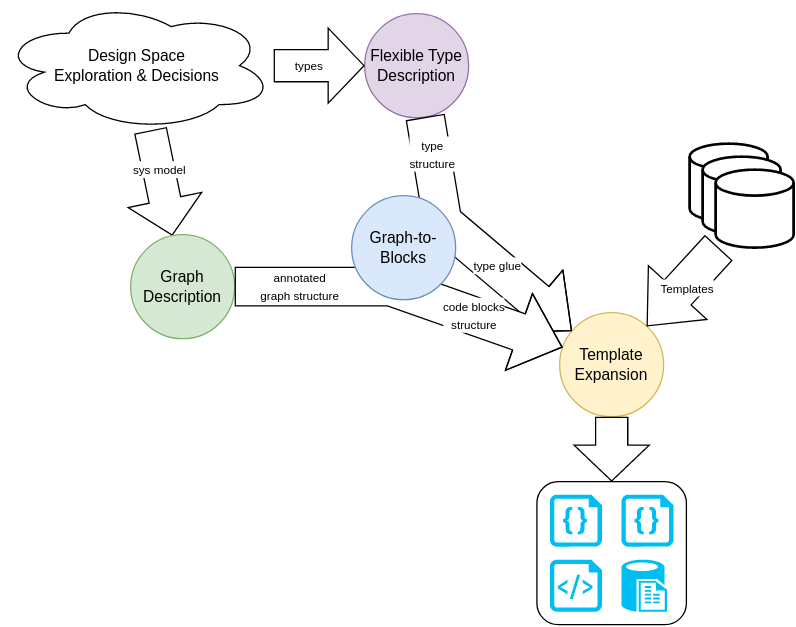ZOTI
Zero Overhead Topology Infrastructure
Genny
Genny, or “the ZOTI code generator”, is a synthesis flow tasked with solving the problem of translating declarative system models into deployable target code. This problem can be visualized as below as transforming a graph-like model capturing relations between constituent components, into a blocks structure representing glue and boilerplate code.

In accordance to the ZOTI design goals, Genny decomposes the translation problem (shown above) into a sequence of sub-problems formulated as model-to-model transformations (shown below). As such, Genny can be the base for various model-to-text tools tailored for arbitrary custom target platforms from (virtually) the same input format.

The sub-problems associated with tools can be formulated as follows:
- Graph Description (ZOTI-Graph)
- is the extraction of the solved system model into a parsable graph-based intermediate format. In this case, a solved system model1 captures every aspect of an implementation, e.g., application, mapping, scheduling, resource allocation, etc., such that the remaining process is only a matter of clerical translation to a deployable (SW) artifact. For this purpose, in our use cases we use an instance of ZOTI-Graph.
- Flexible Type Description (ZOTI-FTN)
- is the extraction of target-agnostic type information for all data flowing through the system, for the purpose of generating target-specific glue code, In our use-cases we use the ZOTI-FTN format.
- Graph-to-Blocks translation
- represents custom-tailored scripts which gradually translate the graph format into a blocks structure. In our use cases the scripts are making heavy use of the APIs of ZOTI-Graph and ZOTI-FTN, and the target format is meant to be parsed by ZOTI-Gen.
- Template Expansion (ZOTI-Gen)
- is the final stage of translating the blocks structure into consistent target code. This is peformed by selecting and expanding templates from libraries of pre-written target-specific boilerplate code and combining them based on the previously-generated target-specific glue code. In our use cases we use the ZOTI-Gen template expander.
Check the Examples page for a list of published use-cases that implement instances of Genny.
-
possibly the output of a design space exploration process ↩